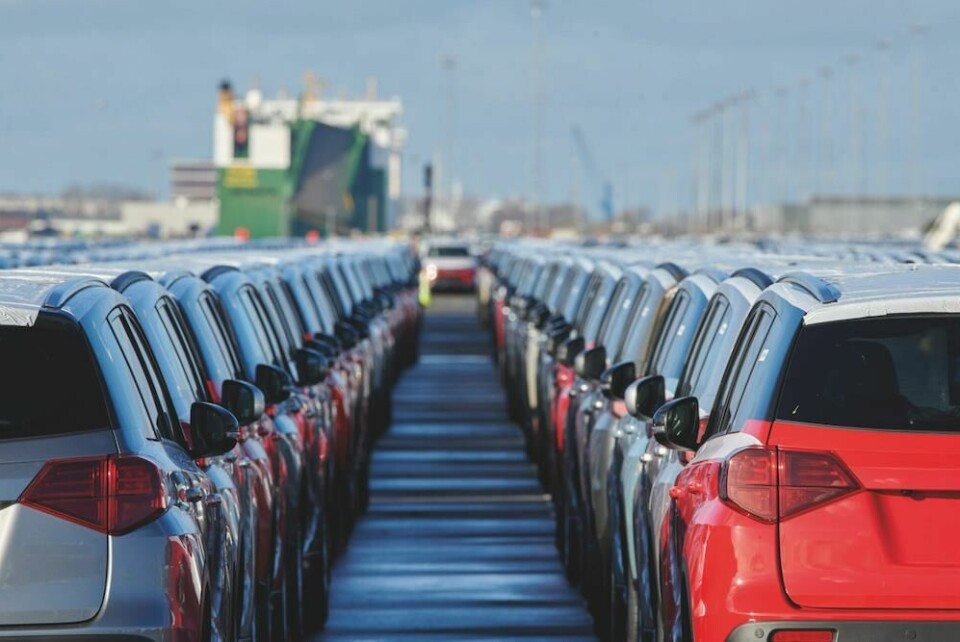
European vehicle ports review: Hanging in the balance
Uneven volumes, a lack of transport capacity and labour have been testing Europe’s top performing finished vehicle handling ports, along with a new wave of EV imports from China. Can ports keep up with new dynamics and requirements?
Europe’s vehicle-handling ports have faced rough seas for the past several years, from the pandemic to chip shortages to disruption from Russia’s invasion of Ukraine. But while 2022 was a year of geopolitical and economic uncertainty, for ports it was also the year when transport and labour shortages came to dominate – a situation that has continued into 2023 and expected to last for several years.
Many ports have struggled with the inconsistency in volumes that the chip shortage caused along with high volumes of unfinished vehicles at some facilities. A lack of workers, and severe shortages of road, rail and ro-ro capacity across the continent, have significantly increased dwell and lead times. Other trends, including larger deep-sea vessels, and a fast rise in electric vehicle imports from China, have further compounded issues.
Over the past year, the situation has been so extreme that there have been times when major ports in Belgium and Germany have effectively had to close to further volumes. The situation has led some OEMs to accelerate shipments of vehicles in containers, typically a niche solution but one that has allowed carmakers to avoid congestion in ro-ro facilities and vehicle-handling terminals.
Although Europe continues to face a highly uncertain economic outlook, with the eurozone recently entering a technical recession, production and sales volume in many European markets have continued to recover, and the lead time to replenish ro-ro, trucking and rail capacity will take years. While pent-up volume is likely to level off, pressure on overall capacity looks set to remain, complicated further by rising volume from China and new requirements for electric vehicles.
However, Europe’s vehicle-handling ports are not sitting back. Many are investing in new storage and transport capacity, enhanced IT systems, and partnering more closely with OEMs and logistics providers. They are also enhancing charging infrastructure and facilities to handle the increased volumes of electric vehicles and electric trucks at ports. The challenges are many, but this is no time for vehicle ports to tread water.
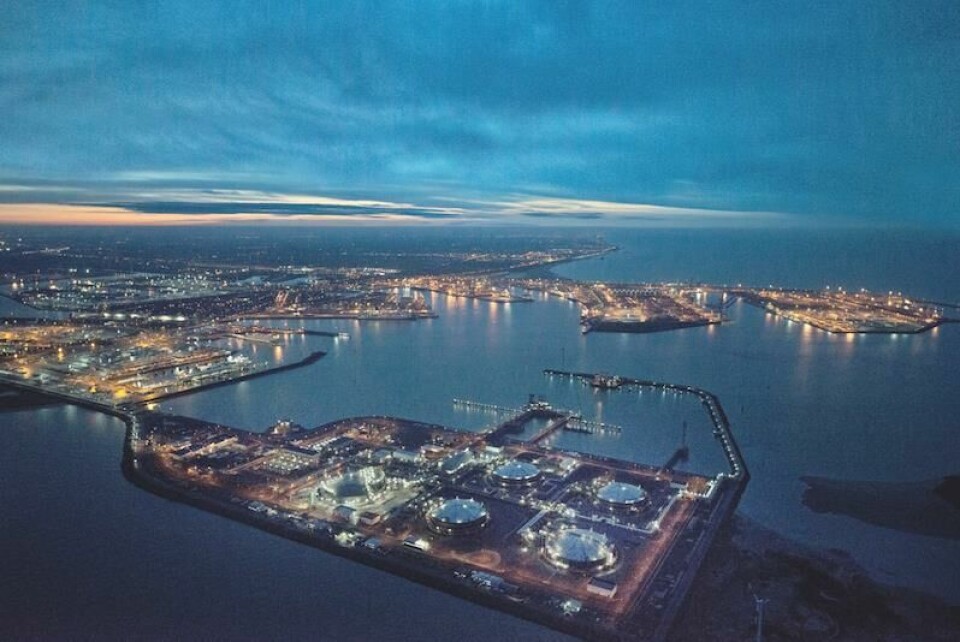
Consolidation in Belgium: Zeebrugge and Antwerp
One of the main changes to the landscape of Europe’s vehicle handling ports in 2022 was the merger of the Belgian ports of Zeebrugge and Antwerp under one operating authority as the Port of Antwerp Bruges, which was finalised in April last year.
The port of Zeebrugge has perennially held the top spot for vehicle handling in Europe, with Antwerp usually in the top five. In 2021 Zeebrugge processed 2.26m vehicles, while Antwerp moved 821,500 (3.08m). The port authority reported combined handling of 3.26m new passenger cars for calendar year 2022, a growth of 5.7% year-on-year. That includes growth of up to 15% year-on-year in electric vehicle volumes. The port furthermore reported a 13.2% year-on-year increase in used car movements and a 17% increase in commercial vehicles. High-and-heavy rolling stock was also up by 9.6%.
The combined ports have seen volumes continue to rise in 2023, with new vehicle handling reaching 905,000 units in the first quarter, up 7.2% on the same quarter in 2022.
Ann de Smet, key account manager at the Port of Antwerp Bruges, says joining forces has enabled Antwerp and Zeebrugge to deal with an automotive supply chain that has been operating far from ‘business as usual’, with severe capacity shortages leading to longer wait times across ports. While 2022 started with the war between Russia and Ukraine and ongoing chip shortages, by the end of the year it was logistics bottlenecks causing major issues.
“The largest challenge we face is the shortage of truck drivers in Europe and this may not be solved quickly.”
On the bright side, since the merger, the port has seen a flood of new investment and projects. That includes a transition to more sustainable operations, including as a hydrogen hub for the import, local production and throughput of green hydrogen.
The port has also opened a €10m ($10.9m) free truck parking facility with capacity for 280 trucks, with charging infrastructure for electric trucks and vehicles. Preparations for truck parking have also started in Zeebrugge’s inner port, which will include charging infrastructure for electric trucks. The port authority plans to create a green corridor for road transport between the two port areas.
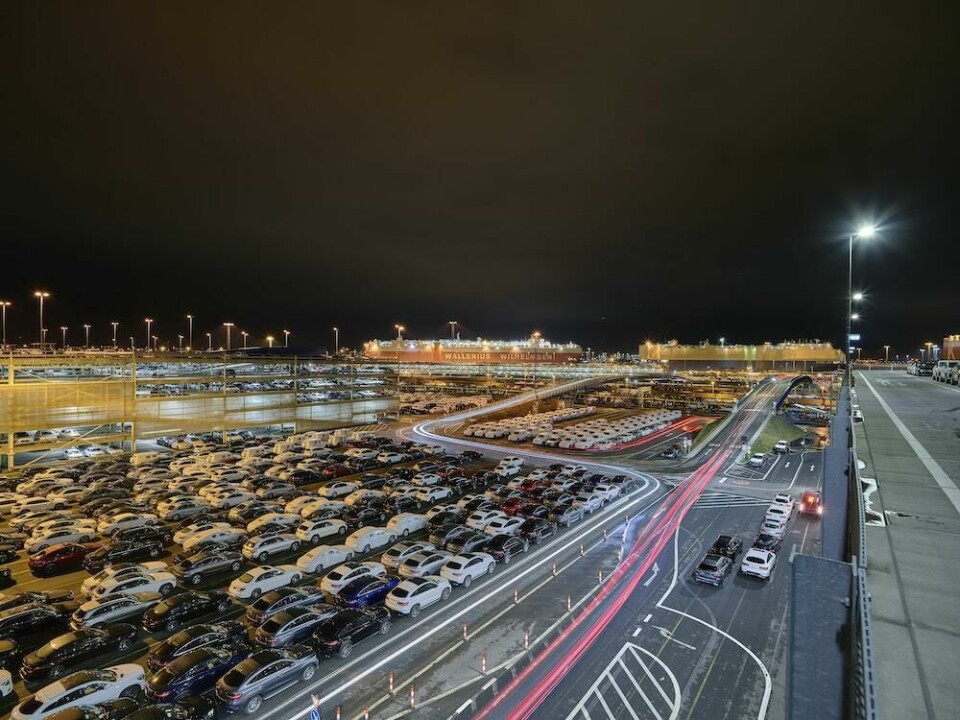
Germany: Battling at Bremerhaven
The German port of Bremerhaven saw vehicle volumes decline year-on-year in 2022 by 5.8%, to 1.6m units – a decrease that reflected capacity shortages as much as it did demand. BLG Logistics, which runs BLG AutoTerminal Bremerhaven, points to the war in Ukraine, energy costs, inflation, a shortage of skilled workers, climate change and ongoing pandemic conditions. In its review of activity for the year, BLG’s CEO Frank Dreek pointed to “a very challenging business environment in logistics”.
The situation has continued in 2023, with Dreek pointing to measure to increase flexibility, digitisation, automation and sustainability.
BLG has taken several measures to mitigate volatility in vehicle imports and exports. Last year it started testing a pre-gate system for truck operations to relieve traffic congestion at the port. The aim of the project, according to the company, is to control the movement of trucks in and out of AutoTerminal Bremerhaven and reduce waiting times. More than 100 trucks can be buffered via the gate. The truck drivers register in an office and wait in marked rows. After approval, they receive access cards, and the trucks are directed to the gates relevant to them. The project initially involved container deliveries, but a second phase is testing the system for finished vehicle road haulage.
Last year also saw closer relations between BLG and Hyundai Glovis, which uses BLG AutoTerminal Bremerhaven to import volumes of Hyundai and Kia volumes. BLG Logistics, which has been handling vehicles delivered and loaded by Glovis for more than a decade, established a joint venture with the South Korean company in 2022 to pool volumes and improve lead times, reduce cost and cut the carbon footprint of shipments.
At the German port of Emden, which exclusively handles VW Group volumes and acts as a logistics hub for the carmaker, terminal operator Evag processed a total of more than 1.1m vehicles. A spokesperson for VW says that more than a third of those vehicles, almost 375,000, were electric variants and the trend towards EVs is continuing apace.
Spain: Barcelona goes electric, and room to manoeuvre in Vigo
In Spain, the port of Barcelona saw a year-on-year 18% increase in vehicle volumes in 2022, driven by a rise in imports, according to port authority, Port De Barcelona. Electric vehicles have played an important part of the growth, notably vehicles imported to Europe from China. The surge picked up steam late in 2022, according to port de Barcelona’s commercial head of automotive, ro-ro and bulk cargo, Lluís París, who says more than 60% of imported EV volumes in 2022 were processed in the last quarter of the year.
“The tendency keeps increasing, and during the first quarter of 2023 we have already handled 70% of the total EVs in 2022,” he says. “These imports are definitely helping to recover the volumes to pre-covid levels. Our terminals have also kept adapting to domestic OEMs’ needs and cooperating with their strategies.”
París also points out that, while exports decreased year-on-year in 2022 by nearly 50%, they increased in the first quarter of 2023 by 60%.
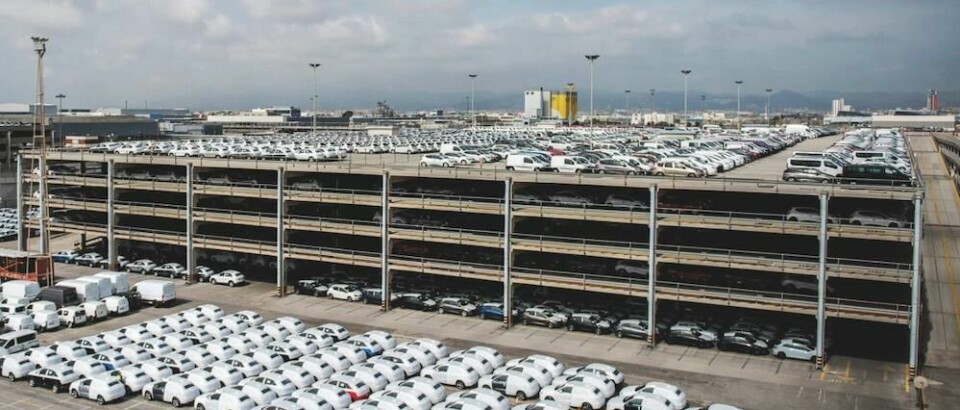
However, the port has felt the impact of ongoing capacity issues. According to París, export volumes have lingered in the port for much longer than expected because of a lack of capacity on ocean ro-ro vessels. Barcelona dealt with that by promptly moving imported volumes and reorganising compound space, as well as finding room in the vicinity of the port to keep operating under higher terminal occupancy.
París furthermore points to inland distribution problems, notably rail in and out of the port. However, the port has been investing to fix the problem.
“On the rail side we are in the middle of a €1.5 billion investment programme which is redefining the port access system,” he says, highlighting connections to the European standard network gauge (which differs from that on the Iberian Peninsula) to the south and west and growing interest from rail operators in adding new traction and rail wagons.
“In two years’ time we’ll have a new shunting station with a much higher capacity, and seven years from now we should be able to work with a completely redefined rail system and a new dedicated highway.”
Barcelona has also set up a joint venture with Spain’s state-owned rail infrastructure manager ADIF to jointly manage the rail connections with the port, which París says has already started to show progress.
“Our interest on the rail mode is clear, and we are currently handling 29% of our car traffic by rail, which means 52% of our exports,” he says.
Looking ahead, Barcelona is positioning itself as a distribution hub for both short-sea European exports in the west Mediterranean region as well as for imports from Asia.
The impact of transport capacity pressure was also recognised across on the west coast of Spain, at the port of Vigo.
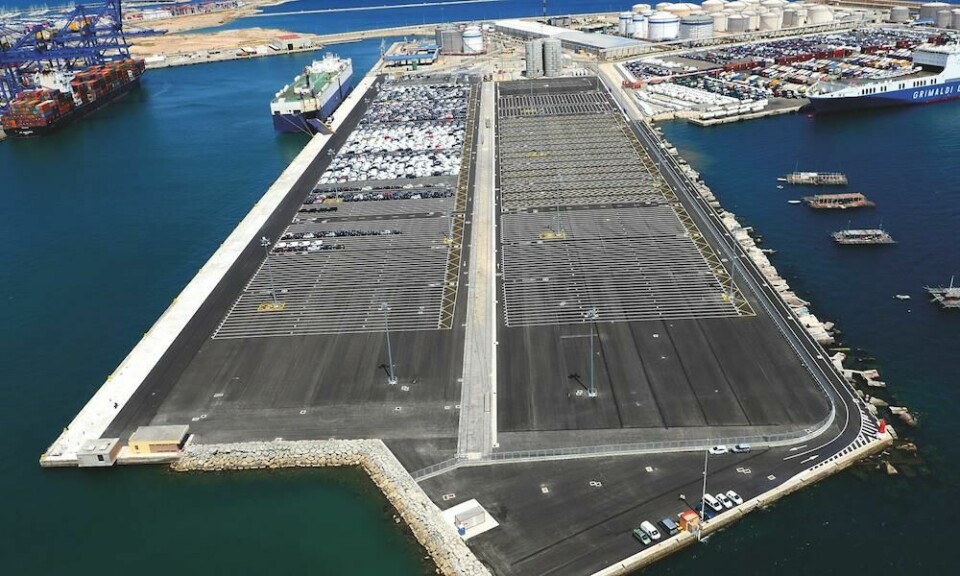
David Castro, commercial manager at the port authority, Autoridad Portuaria de Vigo points to a fast-changing volume mix, including imported vehicles from Asia, and shortages in European vehicle logistics capacity.
“The fact that ro-ro ships are getting larger means more storage area is necessary for embarking operations on those ships,” says Castro. “On the other hand, the greater flexibility provided by smaller boats is missing. All this reduces a certain competitiveness to the European terminals, including the one in the port of Vigo.”
Vigo is working on a project to expand its vehicle terminal, including constructing a larger storage area, adding a second vertical garage and new ramps for deep ocean car carriers.
While the port has seen issues from volatile production and distribution, it has worked closely with its nearest OEM customer Stellantis, which has a plant close to the port, on smoothing out volatility.
“In the port of Vigo, the Stellantis factory has not experienced such volatile output,” says Castro. “There have been specific shortages in the distribution of some components from China, which Stellantis has been able to solve conveniently, so that global production has not been affected.”
South-east Europe: coping at Koper, change in Piraeus
The Slovenian port of Koper, operated by Luka Koper, reported an exceptional 2022, moving more than 801,000 vehicles, a 22% increase year-on-year despite the disruption affecting vehicle logistics across Europe and a shortage of warehouse space at the port. Luka Koper said it was able to attract new volumes as customers sought alternatives to other vehicle terminals in Europe dealing with their own problems.
Luka Koper supported that with significant investments in its vehicle terminal. At the end of the year, it began work building new car storage areas with capacity for 3,500 vehicles, expected to be operational by October 2023. Luka Koper is investing €5.1m in the construction and layout of a new warehouse.
Luka Koper also reported a shift in inland transport capacity in 2022 because of capacity problems on the rail network, resulting in the share of rail freight used to connect the port declining, while road freight increased.
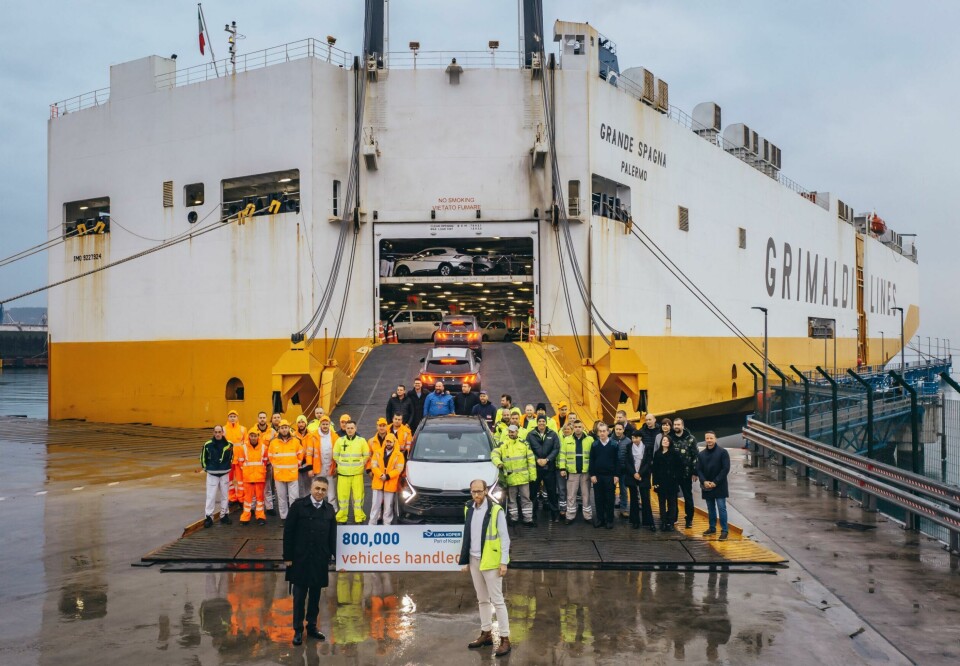
“The extensive renovation and improvement of some of the worn and unsuitable sections of the Slovenian railway network in terms of safety and increased traffic led to occasional and permanent traffic closures, causing severe disruption to rail freight traffic, including to and from the port of Koper,” says a spokesperson for the company.
Looking ahead, Luka Koper sees further investment in port capacity a necessity to improve and develop services and make new land and sea connections. That includes addressing the rail situation.
A spokesperson points to the construction of a new rail link to Divača and works on the Slovenian rail network that will be essential to maintain competitiveness.
The capacity shortage could also be mitigated by falling demand. Luka Koper also says it expects vehicle volumes to stabilise or even decline once pent-up demand is depleted in the face of volatile economic conditions.
Larger and erratic volumes per vessel were recorded at the Greek port of Piraeus in 2022, according to the Piraeus Port Authority (PPA), stretching available trucking capacity. The teams at the car terminal have been working more closely with trucking companies to move vehicles out by increasing gate open hours and collaborating on faster loading and turnaround times.
The port is also investing in new technology and expand facilities. “The application of a new TOS [terminal operating system], which is now fully implemented, has supported operations and provides better visibility of terminal status to clients and users,” says a spokesperson for PPA. “Works on the expansion of the car terminal expected to come online by the end of 2023, which will have a nominal capacity of 5,400 slots, will further ease pressure on yard availability.”
Piraeus recorded an increase in EVs handled, primarily because of volumes shipped out of China. The port has instituted special operating procedures to handle EVs, as well as updating the environmental terms of terminal operations. It is providing on the spot charging services, including boosters where faster charging is required, according to the PPA spokesperson.
One other trend recorded by PPA in 2022 relates to the use of containers for the shipment of vehicles from China, an option that has seen greater popularity since ro-ro capacity has become so constrained, even though it represents only a small percentage of overall vehicle shipments.
“In late December 2022 Piraeus accepted its first shipment of around 1,300 cars on flat racks in containers, which were discharged at the container terminal and transhipped through the car terminal,” notes the PPA spokesperson. “These are Chinese brand cars destined for EU and other Mediterranean destinations.”
Since then, Piraeus has seen a steady flow of Chinese brands, which has continued to grow in 2023.
Embracing the squeeze
As production volumes become more consistent thanks to improved supply of chips, European ports can look forward to less sporadic volumes. However, restrictions on transport capacity and problems with labour recruitment continue to challenge operations. Extremely low ro-ro vessel orders in 2020 and 2021 had led to further fleet reductions, with some ro-ro vessels reportedly shifting from Asia to Europe. More recently, pure-car-and-truck carrier (PCTC) orders have increased. According to S&P Global, around 90 PCTCs were ordered in 2022, treble the amount in 2021; a further 33 have been ordered this year. Recently, Salloum Lines increased its new orders for 2026 to eight vessels.
However, with Chinese vehicle exports rising further in 2023, global PCTC capacity is set to remain tight for several years to come.
There is also an urgent need for more road haulage equipment to get vehicles in and out Europe’s ports, but the current lead time for a new truck is 15-18 months. Mike Sturgeon, executive director of the Association of European Vehicle Logistics (ECG), told the Automotive Logistics and Supply Chain Europe conference this past spring that the number of road transporters lost from the market over the last three years is around 25% of the total fleet – around 3,000-4,000 units. Major car transporter manufacturers in Europe have full order books and it will take a long time to rebalance the European fleet. Rail capacity is also an issue and ongoing restoration work on the German rail freight network is likely to take a decade.
The situation will continue to test the resourcefulness of Europe’s terminal operators and demand closer collaboration between carmakers, their transport and logistics operators and the ports well into the future.





